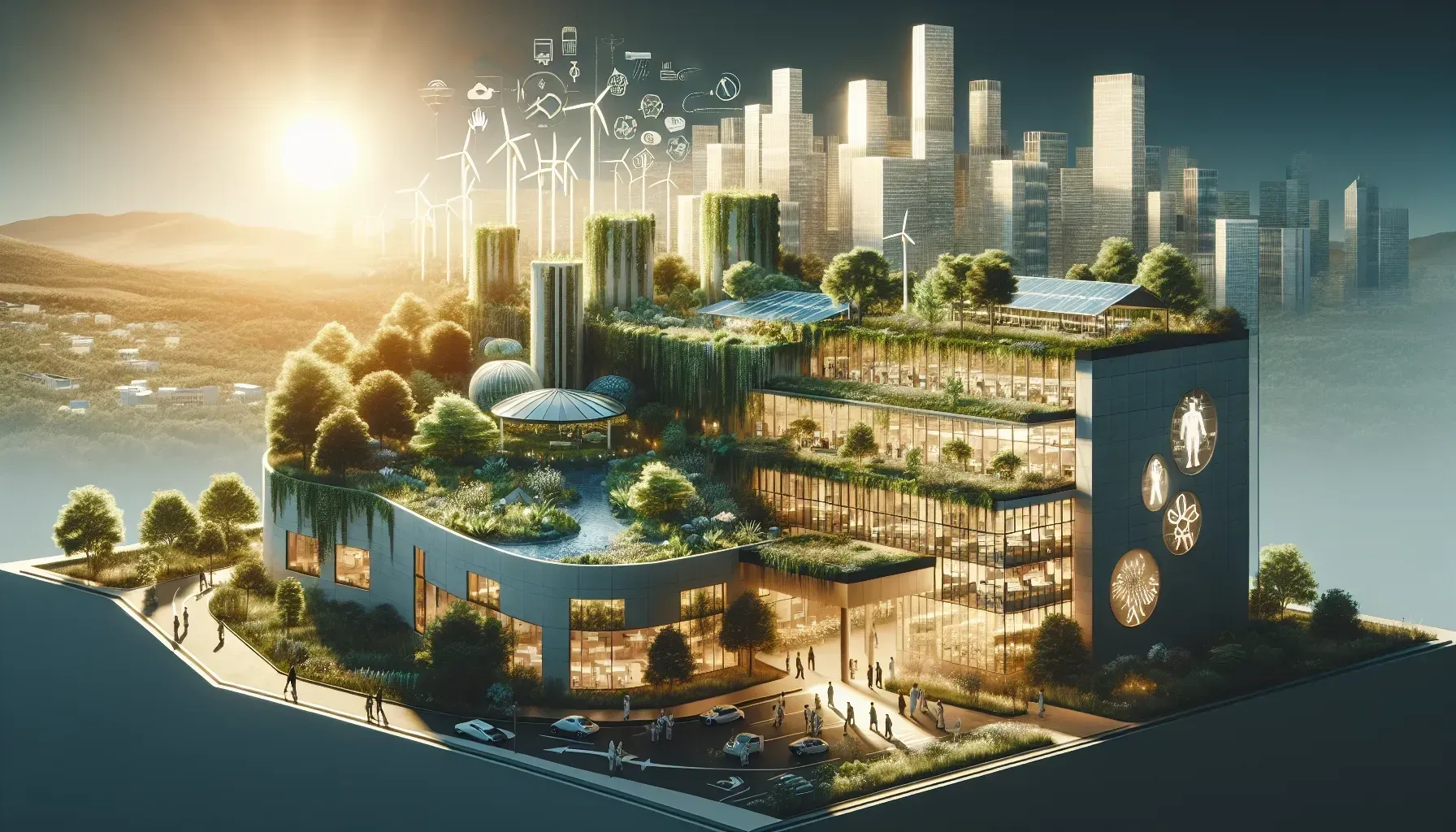Renewing Wellness Spaces: Eco-Friendly Design Innovations in Healthcare Facilities

The future of healthcare design is undergoing a transformation, embracing eco-friendly innovations that prioritize sustainability, patient well-being, and environmental consciousness. As we head into a new era of wellness spaces, the integration of green architecture is poised to revolutionize healthcare facilities, fostering healing environments and promoting a holistic approach to patient care.
Integrating Green Architecture into Wellness Centers for Enhanced Patient Care
In the pursuit of holistic healing, wellness centers are increasingly embracing green architecture to create spaces that nurture both physical and emotional well-being. By incorporating sustainable building practices, such as the use of renewable materials and energy-efficient designs, healthcare facilities are redefining their physical footprint. This forward-looking approach not only aligns with environmental stewardship but also cultivates therapeutic environments that contribute to patient recovery and overall wellness.
The Role of Natural Light and Ventilation in Promoting Health and Reducing Energy Use
The integration of natural light and ventilation serves as a cornerstone in reimagining healthcare spaces for the future. Designing wellness centers with ample access to natural light not only enhances the aesthetic appeal but also plays a pivotal role in improving patient outcomes. Furthermore, strategically planned ventilation systems not only contribute to a healthier indoor environment but also reduce energy consumption, aligning with sustainable operational practices.
Related Article: Environmental Wellness Projects: Promoting Ecosystem Conservation for Public Health Benefits
From Healing Gardens to Rooftop Rainwater Harvests: Pioneering Sustainable Healthcare Designs
A significant shift is witnessed in the incorporation of healing gardens within healthcare facilities, offering patients and caregivers therapeutic outdoor spaces that promote relaxation and recovery. Additionally, the implementation of rooftop rainwater harvesting systems presents an innovative way to utilize natural resources while reducing dependency on traditional water sources. These sustainable initiatives not only elevate the overall patient experience but also underscore the commitment of healthcare institutions towards environmental responsibility.
Materials Matter: Selecting Eco-Friendly Building Resources for Healthier Environments
The careful selection of building materials is fundamental in shaping eco-friendly healthcare spaces. Embracing environmentally conscious materials not only reduces the ecological footprint of wellness centers but also contributes to creating healthier indoor environments for patients, staff, and visitors alike. From recycled building components to toxin-free finishes, the choice of materials reflects a conscientious approach towards fostering sustainable healthcare designs.
Empowering Patients Through Sustainable Design Choices
In the evolving landscape of healthcare design, there is a growing emphasis on empowering patients through sustainable design choices. By involving patients in decision-making processes related to their care environment, healthcare providers can create spaces that reflect individual preferences while promoting sustainability. This approach fosters a sense of ownership and connection to the healing environment, contributing to improved patient satisfaction and engagement.
Case Studies: Healthcare Facilities Leading the Charge in Environmental Stewardship
Several notable healthcare facilities have emerged as pioneers in embracing eco-friendly design innovations. These exemplars demonstrate the successful integration of sustainable practices into their infrastructure, serving as inspirations for future wellness centers. By showcasing real-world applications of green architecture and sustainable technologies, these case studies provide valuable insights into the potential impact of environmentally conscious design on patient care and operational efficiency.
Related Article: Harmonizing Lifestyle with Nature: The Pillars of Eco-Wellness
Enhancing Indoor Air Quality with Natural Purification Systems
Indoor air quality plays a critical role in shaping the overall wellness experience within healthcare facilities. The adoption of natural purification systems, such as plant-based air-filtering mechanisms, represents a progressive step towards creating cleaner and healthier indoor environments. These systems not only mitigate airborne pollutants but also contribute to a soothing ambiance that supports patient recovery and well-being.
Peppino Blog envisages a future where wellness spaces intertwine with eco-friendly design principles to create rejuvenating environments for patients. As sustainable initiatives continue to take center stage in healthcare facility planning, the harmonious integration of green architecture and innovative technologies holds promise for reshaping the landscape of patient care. By prioritizing sustainability, healthcare facilities can embark on a transformative journey towards fostering healing environments that embrace environmental consciousness while promoting holistic well-being.
Frequently Asked Questions
Natural purification systems, such as plant-based air filters, significantly improve indoor air quality by reducing airborne pollutants. These systems create a healthier environment for patients and staff, promoting recovery and well-being. Additionally, they contribute to a calming atmosphere, enhancing the overall experience within healthcare settings.
Green architecture enhances patient care by creating environments that prioritize sustainability and emotional well-being. By using renewable materials and energy-efficient designs, these spaces foster healing and recovery. This holistic approach not only aligns with environmental stewardship but also improves patient outcomes through thoughtfully designed therapeutic environments.
Healing gardens play a crucial role in healthcare facilities by providing therapeutic outdoor spaces for patients and caregivers. These gardens promote relaxation and recovery, contributing to overall well-being. They serve as natural retreats that enhance the patient experience while supporting mental health and emotional resilience during treatment.
Check Out These Related Articles

Revolutionizing Spaces: The Transformative Influence of Wellness on Interior Design

Climate Change and Well-Being: The Interconnectedness of Environmental Health and Human Wellness

Rediscovering Horticultural Therapy: Cultivating Mindfulness Through Gardening
